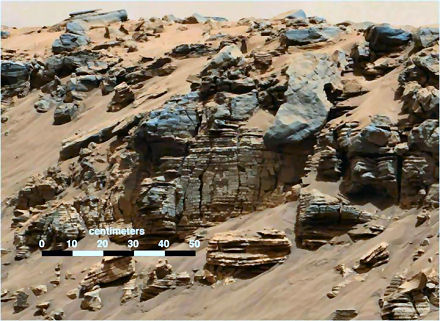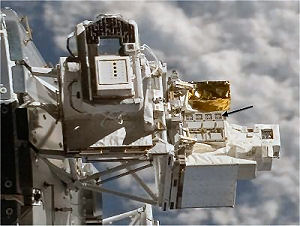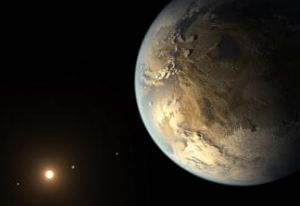
A manned mission to Mars doesn’t just depend on overcoming technological hurdles. With no magnetic field and only a thin atmosphere, the surface of Mars is exposed to much greater amounts of radiation than the surface of the Earth. Quantifying the health risks to astronauts from this radiation has been difficult, but thanks to the Curiosity rover, nearly a year’s worth of radiation measurements are now available.
The 300 days of measurements from Curiosity’s onboard Radiation Assessment Detector (RAD) will provide crucial information for human missions to Mars, says Don Hassler, from the Southwest Research Institute. Hassler is head of the RAD investigation team and the lead author of a study documenting the findings in the journal Science.
“We’re continuing to monitor the radiation environment, and seeing the effects of major solar storms on the surface and at different times in the solar cycle will give additional important data,” he explained. “Our measurements also tie into Curiosity’s investigations about habitability. The radiation sources that are of concern for human health also affect microbial survival as well as the preservation of organic chemicals.”

Both GCRs and SEPs interact with the thin Martian atmosphere and, if energetic enough, penetrate into the Martian soil (regolith), where they produce secondary particles that contribute to the complex radiation environment on the Martian surface, which is unlike anything on Earth.
“The RAD surface radiation data show an average GCR dose equivalent rate of 0.67 millisieverts per day [radiation dose is measured in units of sievert (Sv) or millisievert (1/1000 Sv)] from August 2012 to June 2013 on the Martian surface,” said Hassler. “In comparison, RAD data show an average GCR dose equivalent rate of 1.8 millisieverts per day on the journey to Mars, when RAD measured the radiation inside the spaceship.”

The total during just the transit phases of a Mars mission would be approximately 0.66 Sv for a round trip with current propulsion systems and during similar solar activity. A 500-day mission on the surface would bring the total exposure to around 1 Sv – about the same as exposure to 100 abdominal CT scans.
Long-term population studies have shown that exposure to a dose of 1 Sv is associated with a five percent increase in fatal cancer risk. Although NASA has generally established a three percent increased risk of fatal cancer as an acceptable career limit for astronauts in low earth orbit, it does not currently have a limit for deep space missions, and is working with the National Academies Institute of Medicine to determine appropriate limits for deep space missions, such as a mission to Mars.
Related:
Discuss this article in our forum
One-way Mars missions mooted
The Hitchhiker’s Guide To Mars Rovers
Vegetable compound protects against lethal radiation
Plastic could work as shield against space radiation hazards


















Comments are closed.